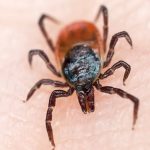
When people regained weight after obesity surgery, it wasn’t entirely clear what to do next. Now, it appears the weight-loss medications Wegovy and Saxenda can help. Both work by controlling appetite and satiety. Wegovy (semaglutide), however, may be superior to Saxenda (liraglutide), a new study finds. “Our research found that newer anti-obesity medications are effective for treating weight regain and optimizing body weight after bariatric [weight-loss] surgery,” said study co-author Dr. Jaime Almandoz, an associate professor in the division of endocrinology at UT Southwestern (UTSW) in Dallas. “Our study also found that weight management medication regimens containing semaglutide worked better than those containing liraglutide, even when the dose of semaglutide was lower than what is currently approved to treat obesity,” Almandoz said in a university news release. More than 40% of American adults are obese, according to the U.S. Centers for Disease Control and Prevention. Weight gain after bariatric surgery is common and can make type 2 diabetes and fatty liver disease worse. To see if medication might help this group of post-surgery patients, the new study compared glucagon-like peptide-1 (GLP-1) receptor agonists Wegovy, which is given as a weekly injection, and Saxenda, a daily injection. The researchers analyzed health records for 207 adults who previously had bariatric surgery and were then treated for obesity at UTSW’s Weight Wellness Program between 2015 and 2021. The… read on > read on >



























-300x200.jpg)










